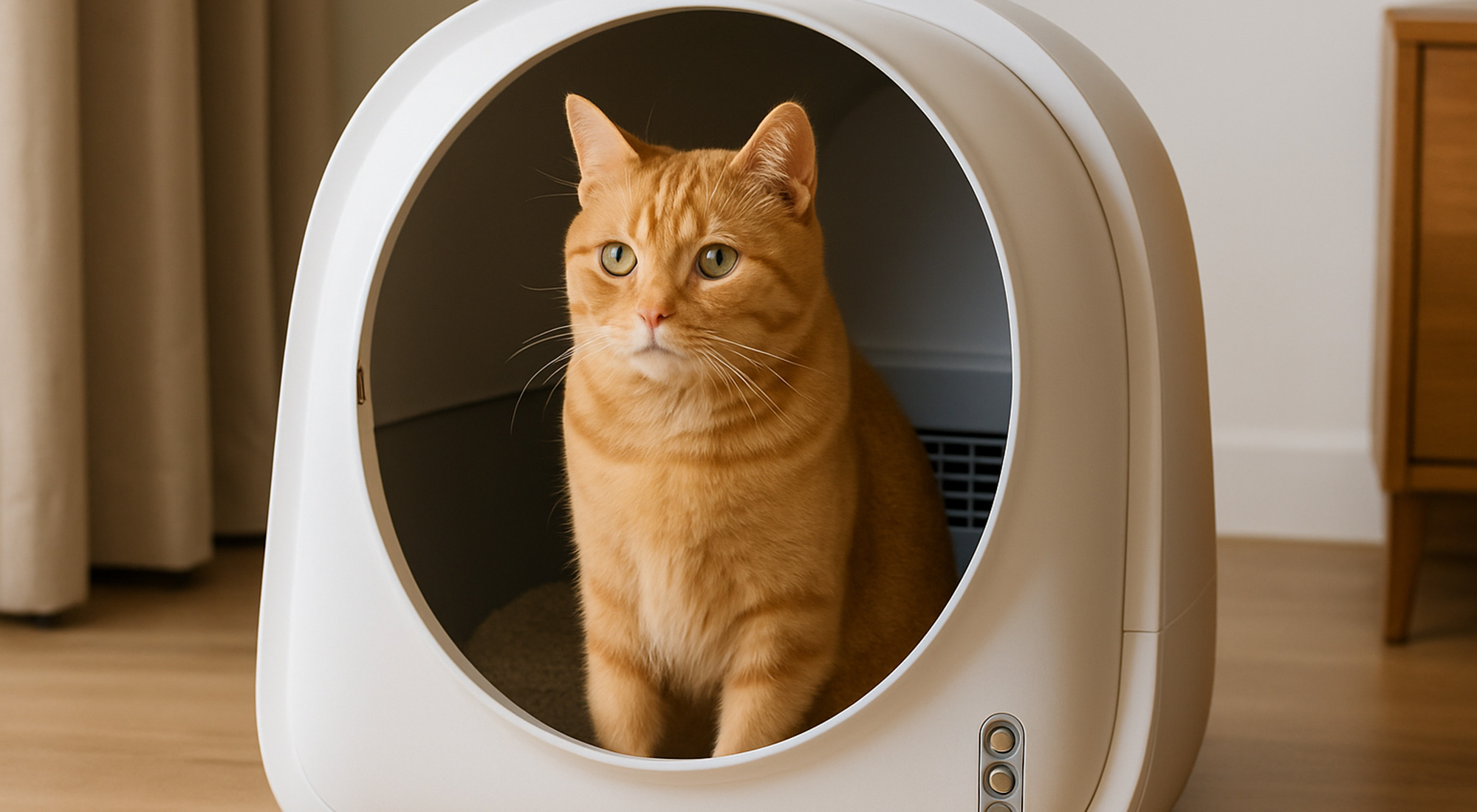Battery Solutions for Automatic Self-Cleaning Litter Boxes
Why Reliable NMC/LFP Battery Packs Define Performance and Safety
Introduction
The global demand for automatic self-cleaning litter boxes is rising rapidly as pet owners seek cleaner, safer, and more convenient solutions for indoor cat care. With stronger motors, odor-control systems, sensors, and smart IoT connectivity, today’s litter robots are no longer simple mechanical devices—they are intelligent appliances that require stable and safe power systems.
Behind every smooth drum rotation, every detection cycle, and every self-cleaning action lies one core component: the battery pack. For OEM/ODM manufacturers, the battery system directly determines performance, safety, user experience, and long-term reliability. As the market evolves, high-quality, custom-designed NMC/LFP battery packs have become essential.
▶ Related smart-appliance power support:
Consumer Electronics Power Solution
1. Why the Battery Is the Core System Behind Modern Automatic Litter Boxes
Automatic litter boxes are motor-driven smart machines operating in confined spaces and sensitive environments. The battery pack has a direct impact on:
- Motor performance & torque output – determines whether rotation is smooth and powerful.
- Safety during power outages – guarantees safe operation even when AC power is lost.
- Sensor accuracy – stable voltage helps ensure reliable detection of cats and waste levels.
- Hygiene & odor-control reliability – uninterrupted operation keeps the environment clean.
- User convenience – less downtime and fewer manual interventions.
In short: an automatic litter box is only as safe and functional as its battery pack.
2. Typical Battery Requirements for Automatic Cat Litter Robots
2.1 Preferred Cell Chemistry: NMC vs. LFP
- NMC (Nickel Manganese Cobalt) – high energy density, compact size, and good high-rate discharge performance.
- LFP (Lithium Iron Phosphate) – long cycle life, excellent thermal stability, and very high safety, especially under continuous load.
▶ Learn more about LFP customization:
Custom LiFePO4 Battery
2.2 Typical Pack Configurations
- 3S / 4S / 6S pack architectures
- 18650 or 21700 cylindrical cells
- Capacity range from 2600 mAh to 10000 mAh or beyond
2.3 Discharge Requirements
- Continuous current: 5–15 A
- Peak current: 20–35 A for motor start and reversing
- Low internal resistance to prevent voltage sag or MCU resets
2.4 Temperature Requirements
- Enclosed housing with limited ventilation demands high thermal stability.
- LFP chemistry is often preferred when maximum heat tolerance and safety margins are required.
2.5 BMS Requirements
- Protection features: SCP, OCP, OVP, UVP
- MOS redundancy for safer fault handling
- NTC temperature monitoring
- UART / I2C communication options
- Low standby consumption to maintain long-term readiness
▶ For slim or special-shaped designs:
Custom Lithium Polymer Battery
3. Pain Points Faced by Litter Box Manufacturers
Based on global ODM/OEM projects, we frequently see recurring challenges:
- Motor stalls caused by insufficient peak current capability.
- Voltage sag leading to MCU resets or incomplete cleaning cycles.
- Thermal buildup inside confined housings.
- Backup power failure during AC outages.
- Short cycle life under daily or multi-daily operation.
- Inconsistent cell supplier quality affecting reliability.
These problems increase warranty costs, create safety risks, and damage long-term brand reputation.
4. PKNERGY’s Battery Solutions for Automatic Litter Robots
PKNERGY delivers custom high-rate NMC/LFP battery packs specifically engineered for smart appliances and motor-driven devices such as automatic litter boxes.
⭐ Multi-Chemistry Solutions
- NMC packs for compact high-performance designs.
- LFP packs for maximum safety and extended cycle life.
- Samsung, LG, EVE, CALB and premium domestic high-rate cell options.
⭐ High-Rate Discharge Engineering
- 10–15 A continuous discharge capability.
- 20–35 A peak current support for drum rotation and jam clearing.
- Low IR cell matching for improved voltage stability.
⭐ Custom BMS Development
- Dual MOS protection architecture.
- Multi-point temperature monitoring.
- Smart communication (UART / I2C) with main controller.
- Fast-charge optimization where required.
- Low-power sleep modes to reduce standby consumption.
⭐ Structural Engineering
- Custom housings tailored to internal mechanical layout.
- Wire harnesses and connector customization.
- Fire-retardant materials and insulation design.
- Shock absorption structures.
- Thermal pads, fuses and other safety components.
⭐ Superior Cycle Life
- NMC: 600–1000 cycles
- LFP: 1500–2000+ cycles
⭐ Full Safety Testing
- Vibration and drop tests.
- Thermal shock and temperature cycling.
- Overcharge/over-discharge durability tests.
- Short-circuit simulation and fault-condition evaluation.
▶ More power options for smart & security devices:
Security Devices Power Solution
5. Application Examples (No Brand Names)
A. Large Drum-Type Litter Robots
Configuration example: 4S 6000 mAh LFP pack
Designed to provide high peak current, strong torque output and outstanding thermal stability for large rotating drums.
B. Compact Self-Cleaning Litter Trays
Configuration example: NMC 3S pack
Slim form factor suitable for compact trays and under-furniture designs where vertical space is limited.
C. AI-Connected Premium Litter Robots
Configuration example: smart BMS pack with backup system
Engineered for intensive daily operation, remote monitoring, and enhanced safety management.
FAQ
Can PKNERGY design a battery pack that fits our existing litter box housing?
Yes. By reviewing your mechanical drawings and available space, we can design NMC or LFP packs with customized housings, harnesses and connectors that fit directly into your current structure.
Which chemistry should we choose for a premium automatic litter box?
For maximum safety, long life and stable performance in enclosed spaces, LFP is often recommended. For ultra-compact models where space is the main limitation, NMC may be preferred for its higher energy density.
Do you support communication between the battery and main controller?
Yes. We can integrate UART, I2C or other customized communication interfaces so that your system can monitor SOC, temperature and protection status in real time.
Contact Miah — PKNERGY
Email: sale@pknergy.com
Phone / WhatsApp: +86 139 0246 3897
Website: www.pknergy.com
Get a Quote: Contact Us


